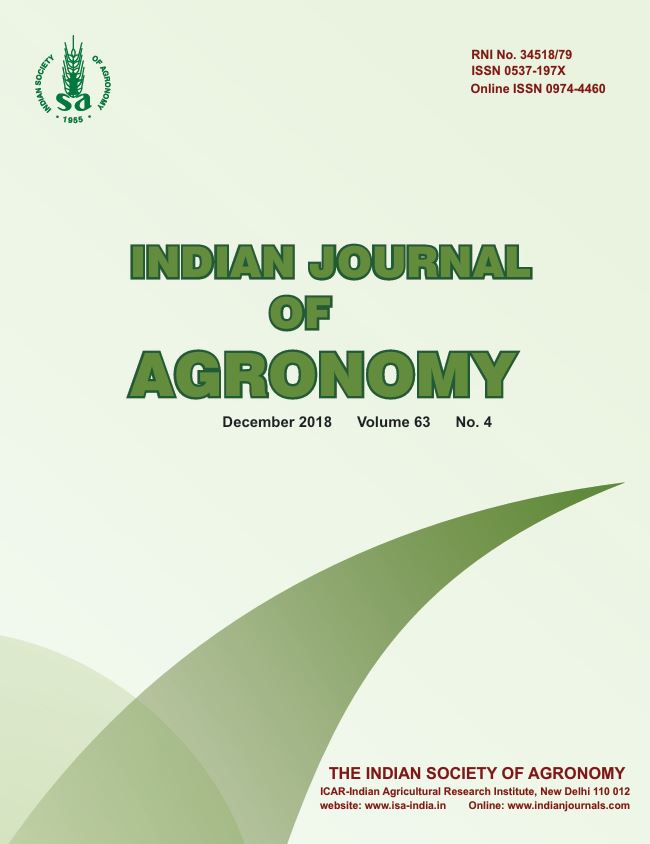Rainfed integrated farming systems in arid zone of India: Resilience unmatched
DOI:
https://doi.org/10.59797/ija.v63i4.5671Keywords:
Alternate land-use systems, Arid zone, Integrated farming system, ResilienceAbstract
Arid zone constitutes about 10% of India’s geographical area, where further scope of area expansion under agriculture and productivity enhancement exists. The traditional farming systems are self-contained and show resilience to aberrant weather conditions, but are low yielders. This region is endowed with some of the most drought hardy crops, multi-purpose trees [e.g. Prosopis cineraria (L.) Druce (khejri) and Ziziphus mauritiana Lam. (ber)], grasses (e.g. Cenchrus ciliaris L., Lasiurus scindicus Henrard), and breeds of cattle (e.g. ‘Tharparkar’, ‘Kankrej’) and small ruminants (Marwari sheep and goat). The farming system research that began in early eighties derives its tools from rich indigenous knowledge accumulated over the ages for resilience, and amalgamated it with the scientific innovation to achieve higher levels of production, while managing the fragile resource base. Owing to risky crop production, land is put to alternate uses with perennial components like agroforestry, agri-horticulture, agri-pasture, horti-pasture, farm forestry etc. At ICAR-CAZRI, Jodhpur, IFS experiment over 7.0 ha area is being conducted since 2001 in adaptive research mode. Based on the results of this experiment, an IFS model for 5–7 ha farm holding for 250–400 mm rainfall zone has been recommended. This includes arable cropping (20%), agroforestry (30%), agri-horticulture (20%), silvi-pasture (10%) horti-pasture (10%) and boundary plantation (10%). In the livestock component, ‘Tharparkar’ cattle [0.75 adult cattle unit (ACU)/ha] and ‘Marwari’ sheep and goat (3 animals/ha) found rational to fully utilize family labour and available fodder. Moisture conservation practices are indispensable component of the model. The expected net returns calculated from this IFS model are 70,000/ha with a payback period of 5 years at an (IRR) of 33%. This IFS model is expected to generate employment to the tune of 130 man-days/ha. This diversification is also equally effective to provide ecosystem services, viz. enhanced biodiversity, carbon-sequestration, fuel-wood production and greenery in the desert.






